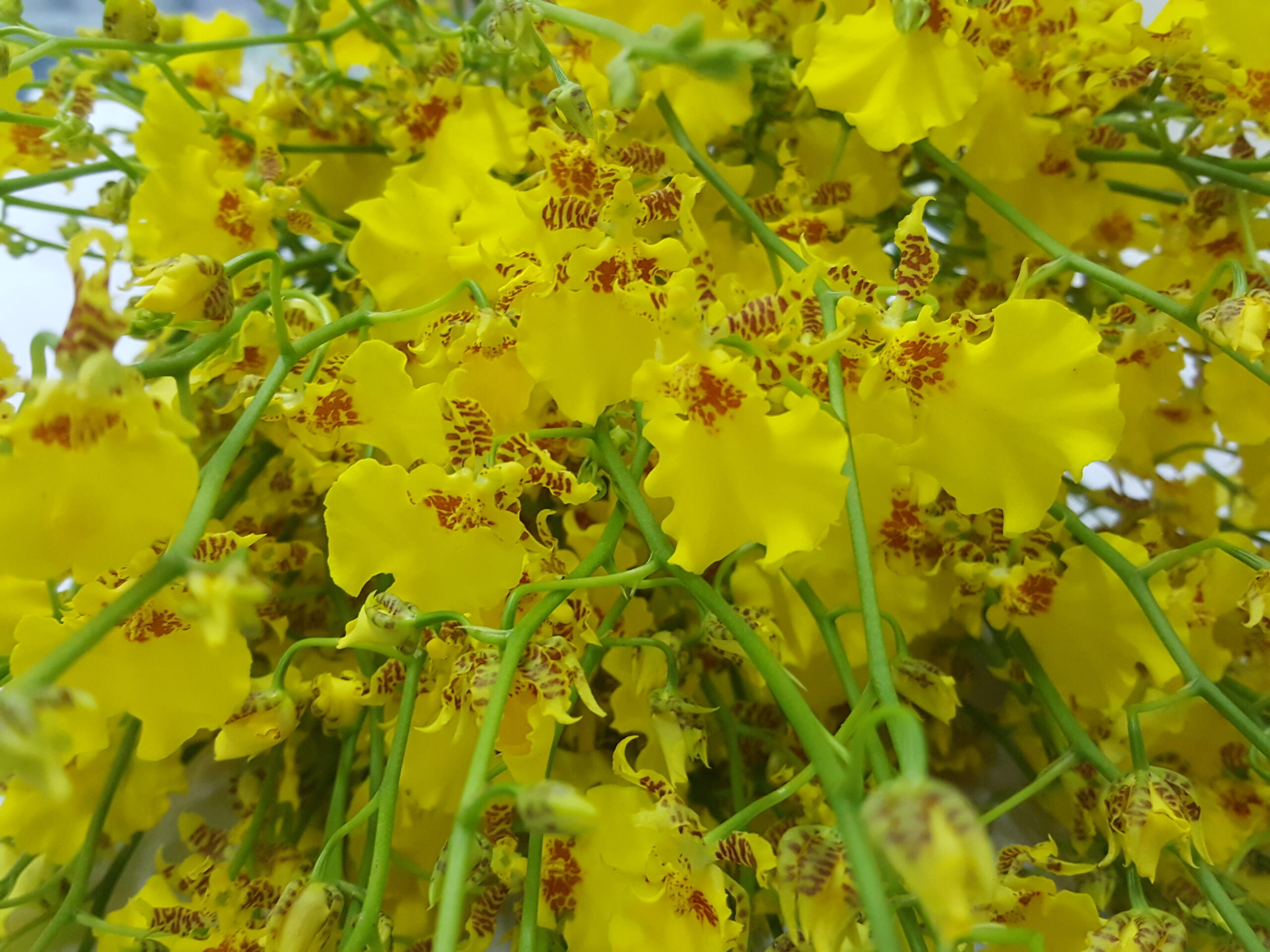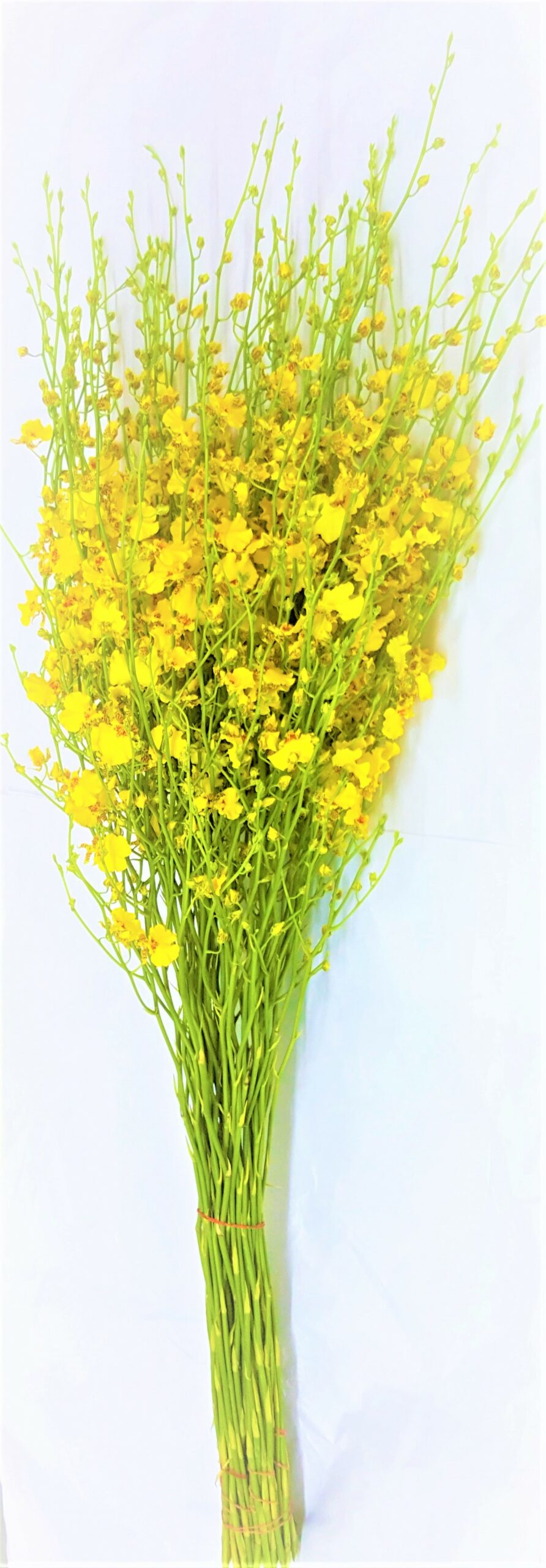
ONCIDIUM
They are mostly golden yellow with or without reddish-brown barring, but some are brown or yellowish-brown. Other Oncidium species have white and pink blooms, while some even have startling, deep red colors in their flowers.
Description
This genus was first described by Olof Swartz in 1800 with the orchid Oncidium altissimum, which has become the type species. Its name is derived from the Greek word ὀγκος, onkos, meaning “swelling”. This refers to the callus at the lower lip.
Most species in the genus are epiphytes (growing on other plants), although some are lithophytes (growing on rocks) or terrestrials (growing in soil). They are widespread from northern Mexico, the Caribbean, and some parts of South Florida to South America. They usually occur in seasonally dry areas.
They can be divided into three categories, according to their growth pattern:
- Some have green pseudobulbs and long racemes with small flowers and a dominant lip. They are mostly golden yellow with or without reddish-brown barring, but some are brown or yellowish-brown. Other Oncidium species have white and pink blooms, while some even have startling, deep red colors in their flowers.
- Another group has extremely small pseudobulbs and stiff, erect, solitary leaves. These cylindrical leaves act as a water reserve. They have long racemes with yellow flowers that seem to fan out at the top. Sizes of these orchids can vary from miniature plants of a couple of centimetres to giants with 30 cm-long leaves and racemes of more than one metre long. These species, known as the Mule-Ears, are now classed as Psychopsis.
- Formerly there was a third group, called the Variegata or equitant oncidiums. They have no pseudobulbs, giving fan-shaped shoots of less than 15 cm, with triangular section leaves. These oval, broad and spongy leaves act as storage organs. Their flowers are most complicated with exquisite colors. The sepals are somewhat fleshy. The petals and the lip are membranaceous. These orchids are now classified as Tolumnia. Cyrtochilum is another genus that many Oncidium species have recently been reclassified into; Cyrtochilum species have extremely long, winding inflorescences that can sometimes reach 20′ or more, curled petals that result in three-pointed blooms, and rambling growth habits in which each new pseudobulb appears on top of the old one.












Reviews
There are no reviews yet.